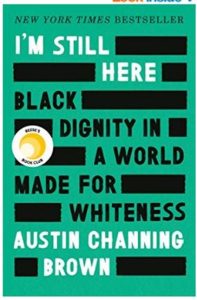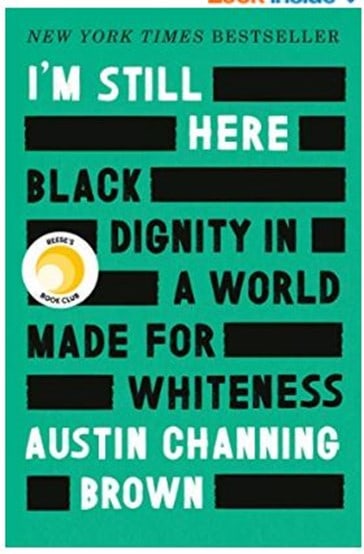By Jim Heffernan
This month (February) is “Black History Month” and I chose this book because it represents a different take on the black experience.
The book is a memoir of a woman born in 1984 who mainly grows up in a very white suburb of Toledo. Her parents named her “Austin” with the express idea that the name would make her seem white on job and scholarship applications.
Her parents divorce when Austin is 10 and she ends up spending summers with her mother in a black area in Cleveland. In Cleveland, she has the complexion to match the neighborhood, but she “talks white” and is generally ignorant of black culture. Luckily, she finds a friend who patiently educates Austin about the ins and outs of being black.
Her father re-marries when she turns 12 and her stepmother introduces her to black religion. It’s an instant hit with her and leads to her eventual career in working for non-profit social service agencies.
I heartedly recommend this book. I hope that if enough of us read and heed books like this we can bury “Black History Month”. Black and white are artificial concepts we cling to in the hope we can elevate some of us at the expense of others.
I’ve put some excepts below. Anybody wanting further discussion is welcome to contact me at codger817@gmail.com.
Page 58
“Then, as we pulled into a parking lot to break for lunch, another white student stood to speak. But instead of a different variation on “Please don’t make me responsible for this,” she took a deep breath and gave in to the emotion of it all. “I don’t know what to do with what I’ve learned,” she said. “I can’t fix your pain, and I can’t take it away, but I can see it. And I can work for the rest of my life to make sure your children don’t have to experience the pain of racism.” And then she said nine words that I’ve never forgotten: “Doing nothing is no longer an option for me.”
Page 116
The moment Black Americans achieved freedom from enslavement, America could have put to death the idea of Black inferiority. But whiteness was not prepared to sober up from the drunkenness of power over another people group. Whiteness was not ready to give up the ability to control, humiliate, or do violence to any Black body in the vicinity – all without consequence.”
Page 116
“Ultimately, the reason we have not yet told the truth about this history of black and white America is because telling an ordered history of this nation would mean finally naming America’s commitment to violent, abusive, exploitative, immoral white supremacy, which seeks the absolute control of Black bodies. It would mean doing something about it.
How long will it be before we finally choose to connect all the dots? How long before we confess the history of racism embedded in our systems of housing, education, health, criminal justice, and more? How long before we dig to the root?”
Page 117
“Our only chance at dismantling racial injustice is being more curious about its origins than we are worried about our comfort. It’s not a comfortable conversation for any of us. It is risky and messy. It is haunting work to recall the sins of our past. But is this not the work we have been called to anyway? Is this not the work of the Holy Spirit to illuminate truth and inspire transformation? It’s haunting. But it’s also holy.”
Page 123
“Because I am a Black person, my anger is considered dangerous, explosive, and unwarranted. Because I am a woman, my anger supposedly reveals an emotional problem or gets dismissed as a temporary state that will go away once I choose to be rational. Because I am a Christian, my anger is dismissed as a character flaw, showing just how far I have turned from Jesus. Real Christians are nice, kind, forgiving—and anger is none of those things.”
 175 pages, Published May 15, 2018
175 pages, Published May 15, 2018
Available at Cloud and Leaf Bookstore in Manzanita, the Tillamook Public Library, and most other booksellers.
4.34 average of 65,590 Goodreads ratings (5.0 is maximum)


